Eager readers may recall that in September 2015, I and two other Taylorcraft flyers took a trip to the Pacific North West and I left my Taylorcraft in Oregon for essential repairs. Also, just four months ago in May, I returned to Oregon to collect it and returned to Illinois.
This September (2016), my friend Jim and I flew from Illinois to the Atlantic Coast, so completing my transcontinental flight and allowing Jim the accolade of flying his own Taylorcraft to all 48 of the contiguous states.
On the way, we spent a few night in Dayton where we visited Carillon Historical Park and the US Air Force National Museum. A couple of days was not enough to see everything in enough detail, so a return visit will have to be in order!
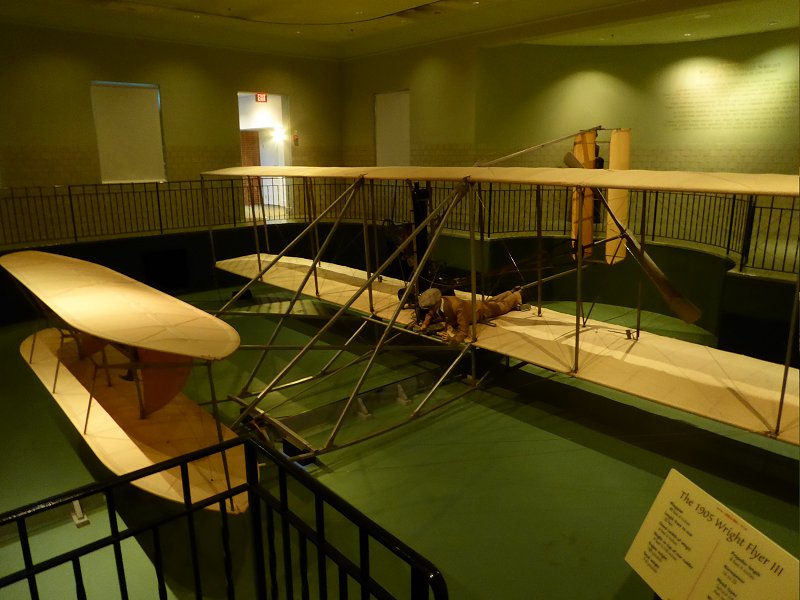
(Above: Original 1905 Wright Flyer III at Carillon Park)
The new Fourth Building at the Air Force Museum was recently opened, and it took Jim & I three hours just to get round that one building. We followed a recommendation to go to the fourth building first, and then retrace our steps backwards through aerospace history. I have to say that the Dayton Air Force Museum was the most comprehensive and enthralling one I have visited.
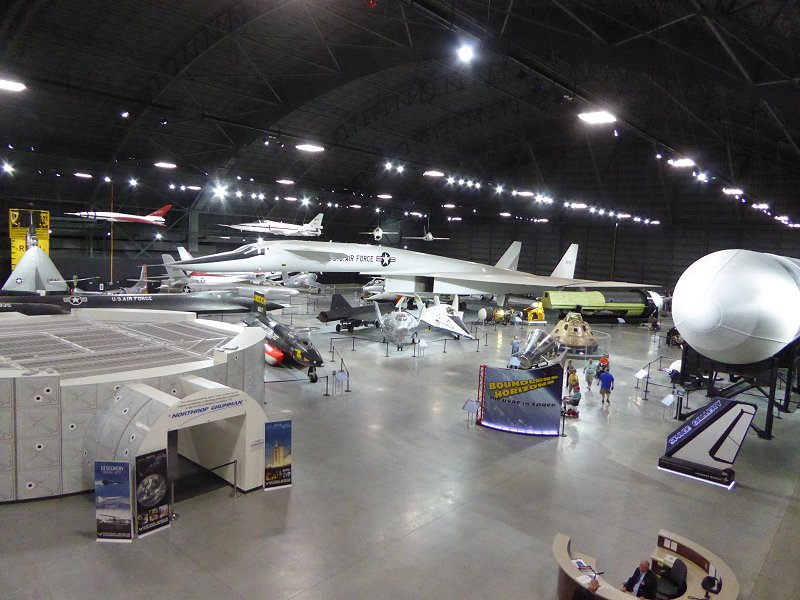
(Above: Fourth Building, US Air Force Museum)
There is no point me posting too many photos here; you just have to visit it yourself, and plan for at least two days. Just for fun, name the aircraft below [Q1]:
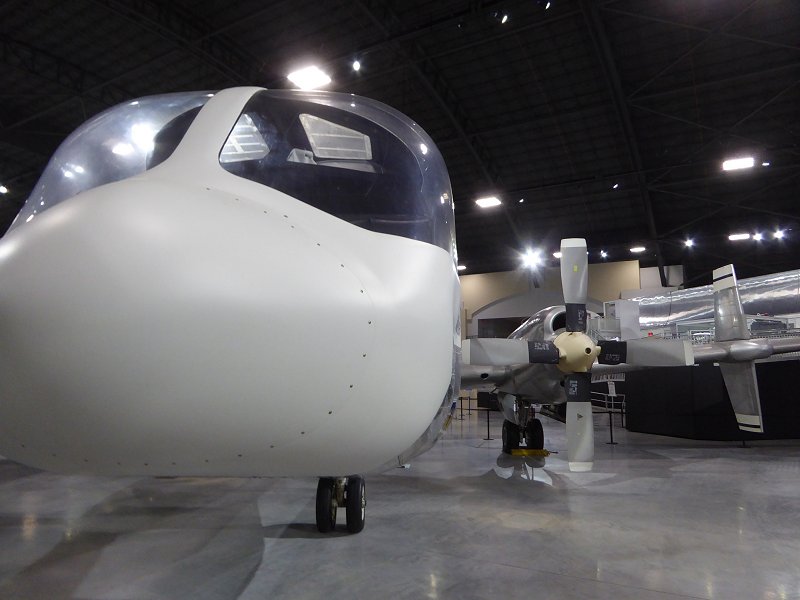
(Above: Just for fun, name the aircraft [Q1])

(Above: The collection of rockets makes the Leicester Space Centre look small!)
From Dayton, Jim and I flew to Greenbriar in West Virginia, where a rather luxurious hotel housed a cold war secret bunker for decades before being outed by the Wall Street Journal in 1992. This bunker was designed to house 1100 Congressmen and staff in the event of a nuclear attack.
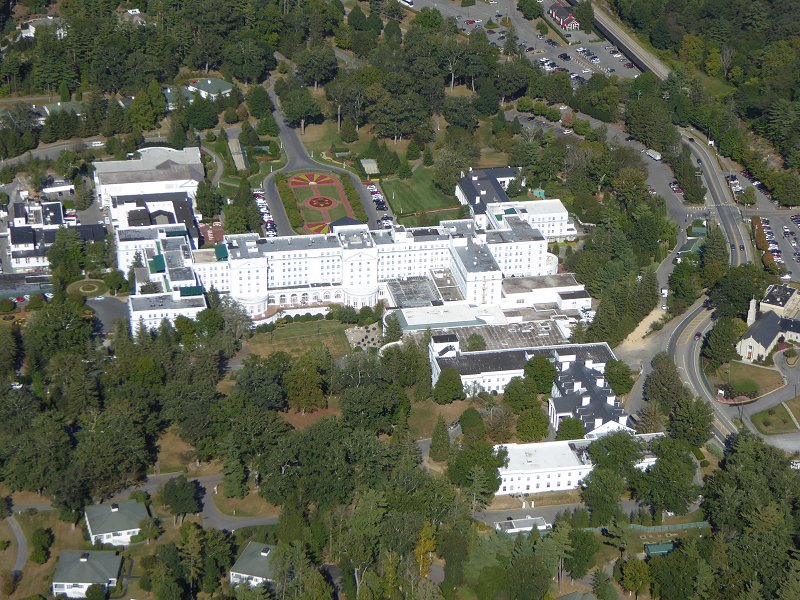
Above: The Greenbriar Hotel...
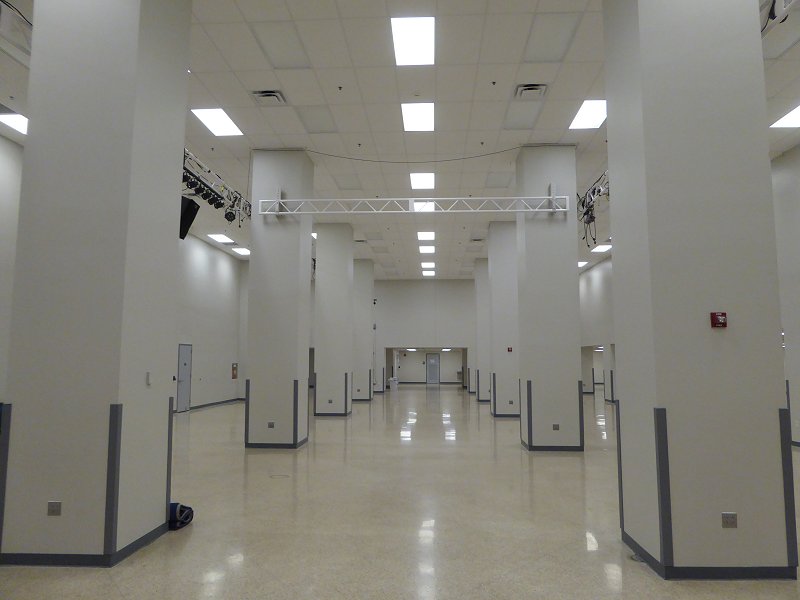
...and part of the bunker compex beneath.
Heading further eastbound, we crossed the Albermarle Sound to reach Kill Devil Hills on the outer Banks of North Carolina.

(Above: Wright Brothers monument)

(Above: "First Flight" Airfield...no, it's not in Paris).
It's strange to think that just last May I was on the Pacific coast!
Our visit here was brief, because tropical storm "Julia" was just to the south and no-one could predict her path, so we headed north. Just up the coast is the Military Aviation Museum, a private collection owned by Jerry Yagen. We were invited to land there and have a look round.
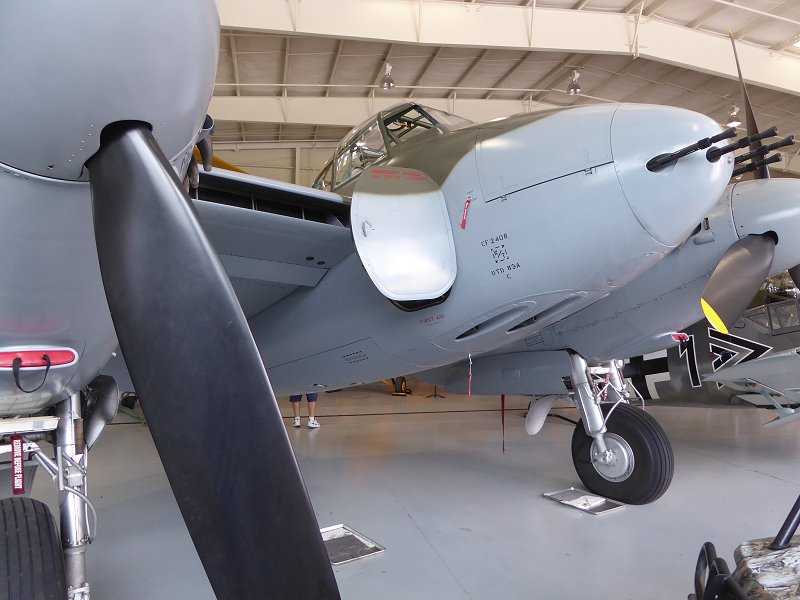
(Above: Mosquito KA114)

Just for fun, name the aircraft in the foreground above [Q2]
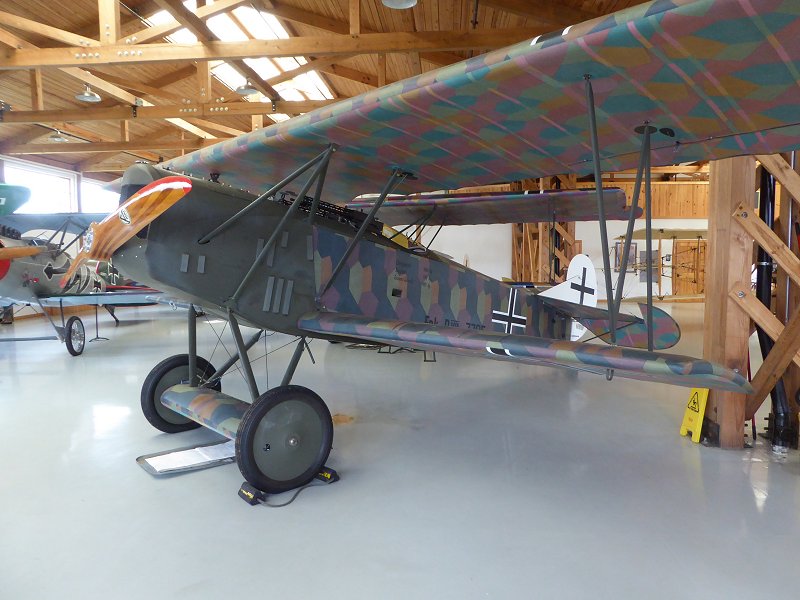
(Above: part of the WWI hangar at the Military Aviation Museum)
We were unable to spend more than a few hours there, and we headed further north up the Atlantic coast...
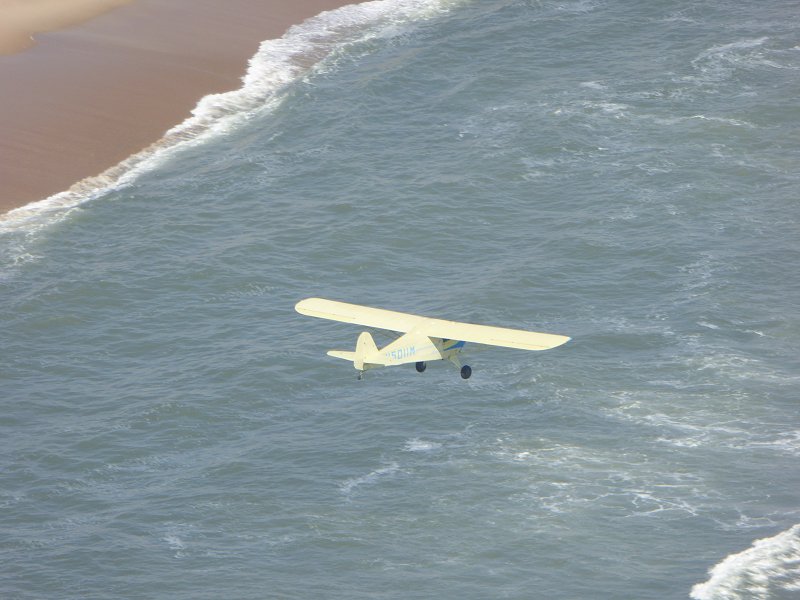
...over Norfolk...
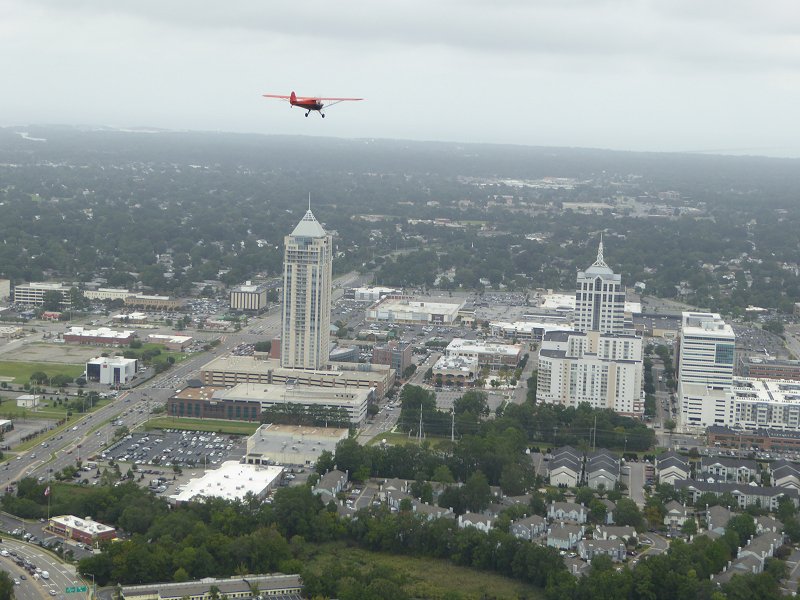
...and Chesapeake Bay...
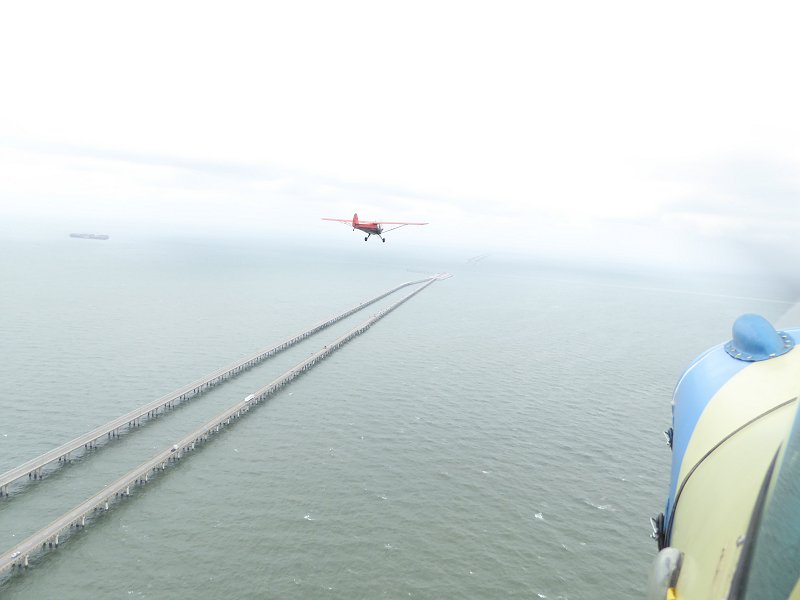
...to Tangier Island for a very late lunch.
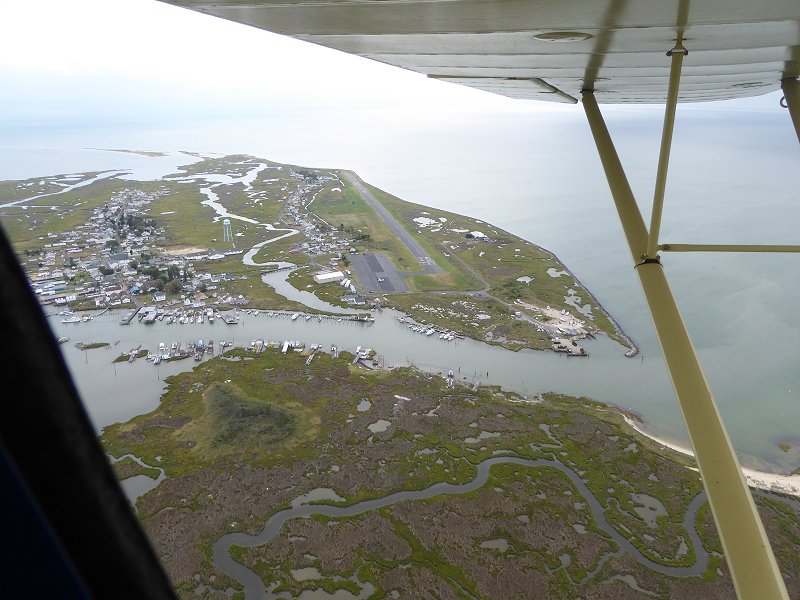
(Above: in the circuit for Tangier Island)
Later, a touch-and-go in Maryland led to an overnight stop in Delaware. As on previous trips, we overnighted in airport lounges as much as possible, and made use of the crew car to go to town for a meal.

(Above: loading the crew car in Georgetown, Delaware).
The following day was one of the highlights of the trip: a flight north up the Hudson VFR corridor to upstate New York. The procedures are quite simple: northbounds to remain on the east side of the river and for fixed wing, between 1000 and 1300 feet. Mandatory self-reporting at certain points along the route. And that's it.
But first we awaited at Old Bridge, Noo Joisey, for the sun to get up a bit for photographic purposes along the Hudson.

(Above: watch for crosswind turbulence at Old Bridge airport)
The first reporting point for us is the eastern tower of the Verrazano Narrows bridge, at the extreme right in the photo below.

Passing Ellis Island:

Approaching lower Manhattan with Jim ahead:


The World Trade Center site:
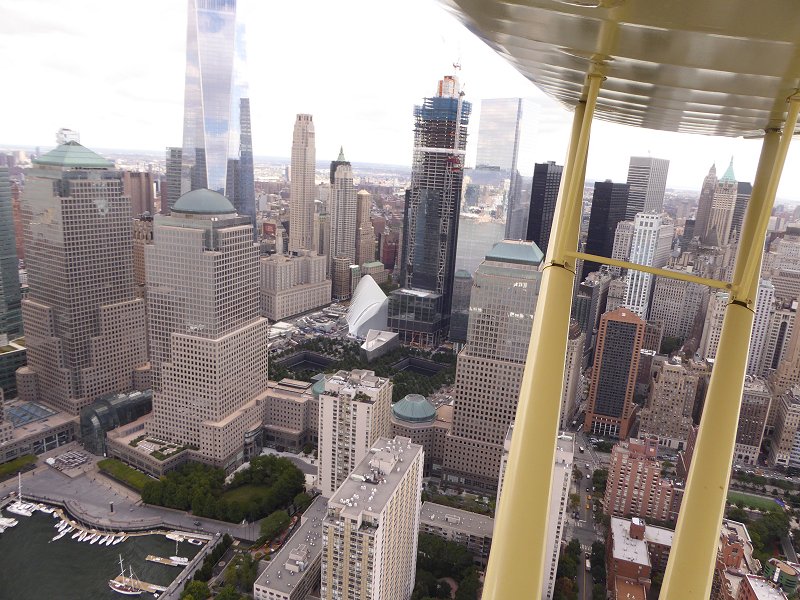
We had to avoid a TFR around the UN building, entailing routing down the centre of the river for a short while:


(Above: USS Intrepid, Concorde and the pavillion for the Space Shuttle Enterprise. This is roughly level with the ditching of the A330).

(Above: Central Park)

(Above: another mandatory reporting point, the George Washington Bridge)
Passing the Tappan Zee bridge, we exit the low-level corridor. What a stunning flight!

(Above: about to pass the Tappan Zee bridge)
Futher north up the Hudson, we pass West Point...

...and after refuelling at Kingston, head for a planned overnight stop at Old Rhinebeck. Cole Palen established his collection there after the old Roosevelt Field (from where Charles Lindbergh departed for his solo transatlantic flight) closed in 1951 to make way for a shopping mall. Palen outbid even the Smithsonian for six WWI-era aeroplanes, and so his collection began.

(Above: Old Rhinebeck)
We received a welcome that surpassed any expectations. One of the surprises was the young age of many of the people working in and organising and managing the airfield and the airshow: many were only in their twenties; this was a "good thing" in our book. We camped under the wing, but they do have a 1920's wooden building set up as a guest house for visiting pilots.

(Above: three Taylor-designed aeroplanes at Old Rhinebeck.
They also have a rather perfect replica of the Spirit of St Louis, completed this year and first flown in May 2016. They didn't fly it the day we were there:

The next day's forecast was not as good as we had been experiencing so far, but it looked adequate to cross what, from previous experience, I call the "Jungles of Pennsylvania"...vast tracts of woods and forest offering little opportunity for somewhere to safely go in case of trouble. So after the afternoon airshow, we departed Old Rhinebeck for the 2.5 hour flight to Lock Haven. There is a lot of Piper and Taylorcraft history there, and Jim & I planned to visit the Piper Aviation Museum that is on the airfield.
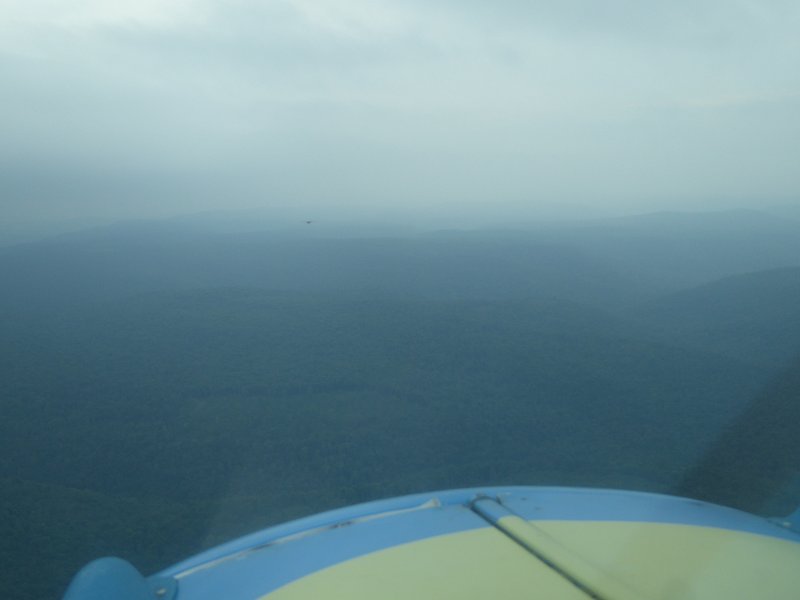
(Above: Pennsylvania)
After a late arrival at Lock Haven, with accommodations in the well-appointed caravan, the morning broke with low cloud, and this was not unexpected. There had been a front ahead of us heading east for a few days, and we had actually expected to meet it the previous day. But we took this first weather delay of our trip to see the town and museum. The Piper Museum is small but well-appointed, and worth a visit.
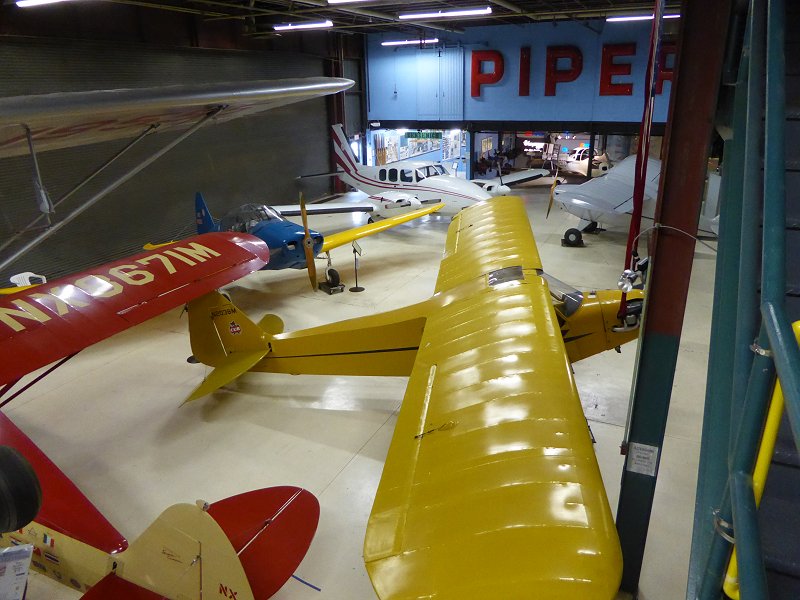
(Above: Piper Museum, Lock Haven)
Travelling from Lock Haven westbound, we stopped at Put-In-Bay on Lake Erie, which has America's forth highest monument.
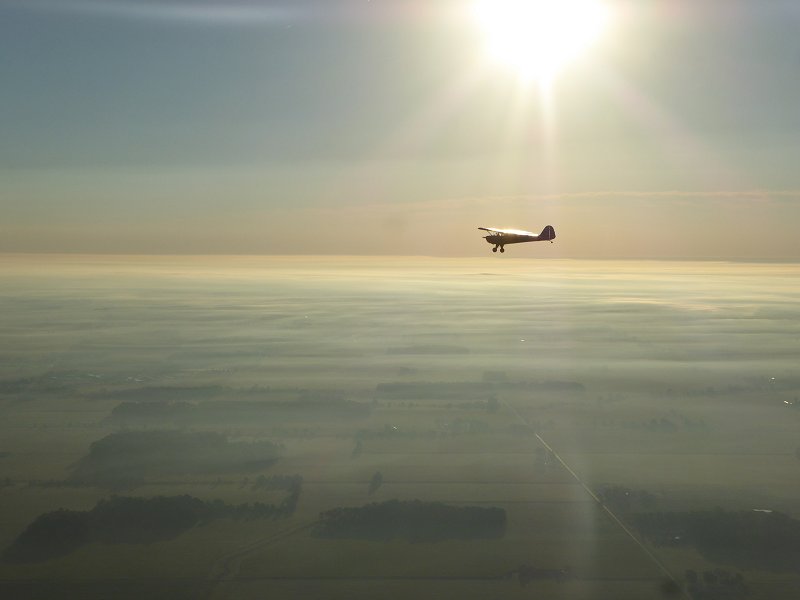
(Above: early morning mist en route to Put-In-Bay)

(Above: Perry's monument marking the 1813 naval battle between the UK and US)
Of note in Ohio is that houses don't have swimming pools; they have ponds, complete with beach. This seems to be confined to Ohio only.

(Above: Swimming ponds in Ohio)
In Michigan, we spent half a day at Kalamazoo Air Zoo where, in the workshops, they restore WWII trainers lifted from the waters of Lake Michigan.
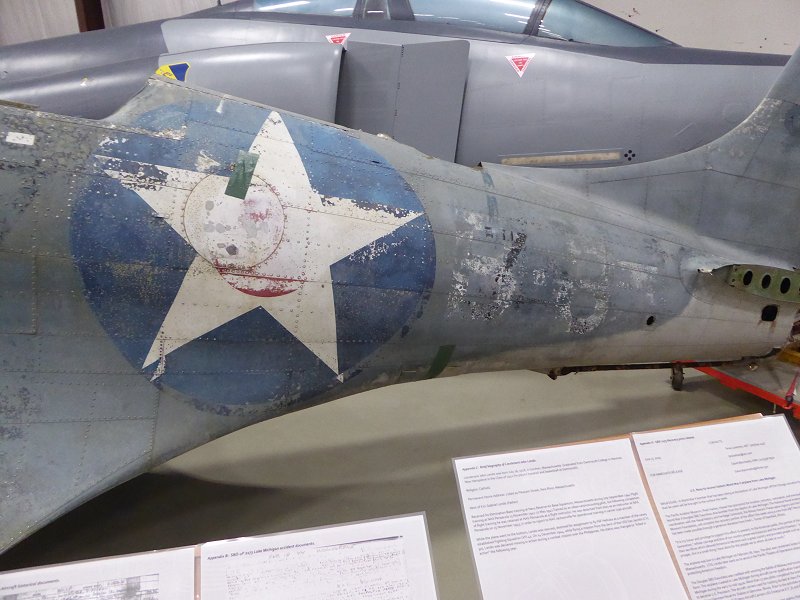
(Above: Dauntless dive-bomber in remarkable condition after 70+ years in Lake Michigan)

(Above: Just for fun, name the foreground aircraft [Q3])
We declined the crossing of lake Michigan and routed south of Gary Indiana and Chicago to return to Dacy. All in all a very exciting and educational trip.

(Above: the planned route)
A few stats:
33 hours and 2800 miles approx flown, 17 legs in 11 States
Rob
This September (2016), my friend Jim and I flew from Illinois to the Atlantic Coast, so completing my transcontinental flight and allowing Jim the accolade of flying his own Taylorcraft to all 48 of the contiguous states.
On the way, we spent a few night in Dayton where we visited Carillon Historical Park and the US Air Force National Museum. A couple of days was not enough to see everything in enough detail, so a return visit will have to be in order!

(Above: Original 1905 Wright Flyer III at Carillon Park)
The new Fourth Building at the Air Force Museum was recently opened, and it took Jim & I three hours just to get round that one building. We followed a recommendation to go to the fourth building first, and then retrace our steps backwards through aerospace history. I have to say that the Dayton Air Force Museum was the most comprehensive and enthralling one I have visited.

(Above: Fourth Building, US Air Force Museum)
There is no point me posting too many photos here; you just have to visit it yourself, and plan for at least two days. Just for fun, name the aircraft below [Q1]:

(Above: Just for fun, name the aircraft [Q1])

(Above: The collection of rockets makes the Leicester Space Centre look small!)
From Dayton, Jim and I flew to Greenbriar in West Virginia, where a rather luxurious hotel housed a cold war secret bunker for decades before being outed by the Wall Street Journal in 1992. This bunker was designed to house 1100 Congressmen and staff in the event of a nuclear attack.

Above: The Greenbriar Hotel...

...and part of the bunker compex beneath.
Heading further eastbound, we crossed the Albermarle Sound to reach Kill Devil Hills on the outer Banks of North Carolina.

(Above: Wright Brothers monument)

(Above: "First Flight" Airfield...no, it's not in Paris).
It's strange to think that just last May I was on the Pacific coast!
Our visit here was brief, because tropical storm "Julia" was just to the south and no-one could predict her path, so we headed north. Just up the coast is the Military Aviation Museum, a private collection owned by Jerry Yagen. We were invited to land there and have a look round.

(Above: Mosquito KA114)

Just for fun, name the aircraft in the foreground above [Q2]

(Above: part of the WWI hangar at the Military Aviation Museum)
We were unable to spend more than a few hours there, and we headed further north up the Atlantic coast...

...over Norfolk...

...and Chesapeake Bay...

...to Tangier Island for a very late lunch.

(Above: in the circuit for Tangier Island)
Later, a touch-and-go in Maryland led to an overnight stop in Delaware. As on previous trips, we overnighted in airport lounges as much as possible, and made use of the crew car to go to town for a meal.

(Above: loading the crew car in Georgetown, Delaware).
The following day was one of the highlights of the trip: a flight north up the Hudson VFR corridor to upstate New York. The procedures are quite simple: northbounds to remain on the east side of the river and for fixed wing, between 1000 and 1300 feet. Mandatory self-reporting at certain points along the route. And that's it.
But first we awaited at Old Bridge, Noo Joisey, for the sun to get up a bit for photographic purposes along the Hudson.

(Above: watch for crosswind turbulence at Old Bridge airport)
The first reporting point for us is the eastern tower of the Verrazano Narrows bridge, at the extreme right in the photo below.

Passing Ellis Island:

Approaching lower Manhattan with Jim ahead:


The World Trade Center site:

We had to avoid a TFR around the UN building, entailing routing down the centre of the river for a short while:


(Above: USS Intrepid, Concorde and the pavillion for the Space Shuttle Enterprise. This is roughly level with the ditching of the A330).

(Above: Central Park)

(Above: another mandatory reporting point, the George Washington Bridge)
Passing the Tappan Zee bridge, we exit the low-level corridor. What a stunning flight!

(Above: about to pass the Tappan Zee bridge)
Futher north up the Hudson, we pass West Point...

...and after refuelling at Kingston, head for a planned overnight stop at Old Rhinebeck. Cole Palen established his collection there after the old Roosevelt Field (from where Charles Lindbergh departed for his solo transatlantic flight) closed in 1951 to make way for a shopping mall. Palen outbid even the Smithsonian for six WWI-era aeroplanes, and so his collection began.

(Above: Old Rhinebeck)
We received a welcome that surpassed any expectations. One of the surprises was the young age of many of the people working in and organising and managing the airfield and the airshow: many were only in their twenties; this was a "good thing" in our book. We camped under the wing, but they do have a 1920's wooden building set up as a guest house for visiting pilots.

(Above: three Taylor-designed aeroplanes at Old Rhinebeck.
They also have a rather perfect replica of the Spirit of St Louis, completed this year and first flown in May 2016. They didn't fly it the day we were there:

The next day's forecast was not as good as we had been experiencing so far, but it looked adequate to cross what, from previous experience, I call the "Jungles of Pennsylvania"...vast tracts of woods and forest offering little opportunity for somewhere to safely go in case of trouble. So after the afternoon airshow, we departed Old Rhinebeck for the 2.5 hour flight to Lock Haven. There is a lot of Piper and Taylorcraft history there, and Jim & I planned to visit the Piper Aviation Museum that is on the airfield.

(Above: Pennsylvania)
After a late arrival at Lock Haven, with accommodations in the well-appointed caravan, the morning broke with low cloud, and this was not unexpected. There had been a front ahead of us heading east for a few days, and we had actually expected to meet it the previous day. But we took this first weather delay of our trip to see the town and museum. The Piper Museum is small but well-appointed, and worth a visit.

(Above: Piper Museum, Lock Haven)
Travelling from Lock Haven westbound, we stopped at Put-In-Bay on Lake Erie, which has America's forth highest monument.

(Above: early morning mist en route to Put-In-Bay)

(Above: Perry's monument marking the 1813 naval battle between the UK and US)
Of note in Ohio is that houses don't have swimming pools; they have ponds, complete with beach. This seems to be confined to Ohio only.

(Above: Swimming ponds in Ohio)
In Michigan, we spent half a day at Kalamazoo Air Zoo where, in the workshops, they restore WWII trainers lifted from the waters of Lake Michigan.

(Above: Dauntless dive-bomber in remarkable condition after 70+ years in Lake Michigan)

(Above: Just for fun, name the foreground aircraft [Q3])
We declined the crossing of lake Michigan and routed south of Gary Indiana and Chicago to return to Dacy. All in all a very exciting and educational trip.

(Above: the planned route)
A few stats:
33 hours and 2800 miles approx flown, 17 legs in 11 States
Rob
Comment